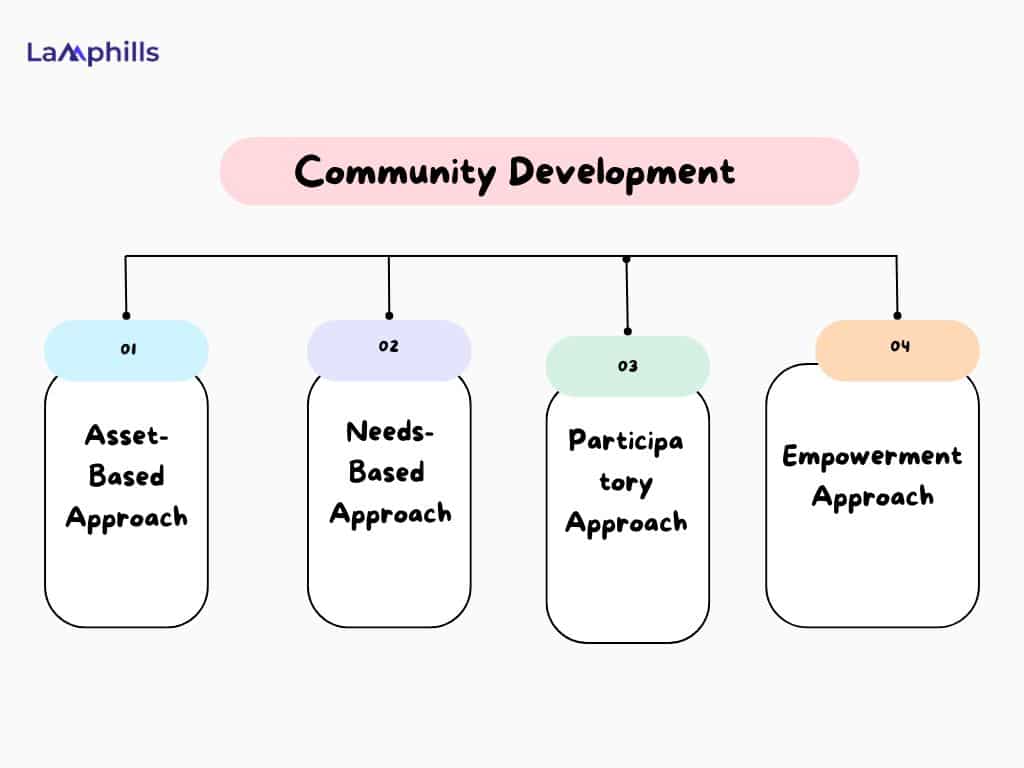Nobody wants to be left out, and I’m sure you wouldn’t want that either. Well, building a community online for your brand demands some strategies, but do you know the best strategies to employ? Assuming you have a dedicated group of individuals who are not just customers but also loyal advocates of your brand. That’s not all! They are actively engaging and spreading the word about your products or services. Would you just let them go? Of course, not!
Creating or building a strong online community is essential for brand growth and success. So, I’ll give you the top 10 strategies that can help you foster a thriving online community that not only supports your brand but also helps it flourish beyond your wildest dreams. Keep reading!
Key Points
- Aligning community goals with brand objectives helps ensure every action taken contributes to desired outcomes.
- Tailoring content to audience preferences strengthens connections and enhances community engagement.
- The right platform choice is crucial for fostering meaningful interactions and building a loyal community.
- Offering a mix of content types caters to different preferences, keeping the community actively engaged.
- Encouraging interaction through active participation creates a vibrant and connected community.
10 Strategies for Building a Community Online for Your Brand
Building an online community for your brand is crucial for engaging with your audience, fostering relationships, and ultimately growing your business. There are various strategies you can employ to create a strong and active online community. They are as follows:
#1. Define Your Goals
When it comes to building an online community, defining your goals is crucial for success. Think about what you want to accomplish by creating this community. Are you looking to boost brand recognition, attract more visitors to your website, enhance customer loyalty, or perhaps all of the above?
Having a clear understanding of your objectives will serve as a compass, directing your efforts and shaping your approach. For instance, if your primary focus is on increasing brand awareness, your strategies will cover more. This may include engaging content creation, interactive discussions, and collaborations with influencers to reach a broader audience.
On the other hand, if your goal is to drive website traffic, you might emphasize exclusive member-only offers, contests, or promotions to entice community members to visit your site regularly.
When you define your goals, you can now channel your community engagement tactics to align with your overarching objectives. That’s ensuring that every action taken brings you closer to achieving your desired outcomes. Read this Digital Marketing Success: 10 SEO Goals Your Brand Should Target for 2024
#2. Know Your Audience
Knowing who your audience is can make a huge difference in how successful your content and interactions are. It’s like throwing a party – you want to know who’s coming so you can plan the right music, food, and activities to make sure everyone has a good time.
To figure out your audience, first, do some research on things like their age, gender, location, and interests. This way, you can create content and engage with them in a way that connects. For example, if your audience is mostly young adults who love outdoor activities, you might focus your content to include hiking tips or camping stories.
By understanding your audience’s demographics, preferences, and behaviors, you can make sure your community efforts hit the mark and build a stronger connection with the people you’re trying to reach. Hence, it’s about creating content that speaks their language and connects with them on a personal level.
Get more insights here: HOW TO REACH YOUR IDEAL AUDIENCE: Mastering Social Media Targeting Strategies
How to Do Audience Research: A Comprehensive Guide
#3. Choose the Right Platform
Selecting the right platform for your online community is like picking the perfect outfit for a special occasion. It needs to fit just right. Just like you wouldn’t wear a ball gown to a casual get-together, you wouldn’t want to choose a platform that doesn’t connect with your audience.
Think about where your community likes to hang out online. Are they active on social media, engaging in discussions on forums, or do they prefer browsing a dedicated website? If you choose a platform that aligns with their preferences, you’re setting the stage for seamless interaction and meaningful connections.
Imagine walking into a room full of people who share your interests and are ready to connect with you. That’s the kind of atmosphere you want to create in your online community, and it all starts with choosing the right platform. So, understand your audience and pick a platform that feels like home to them. Trust me, it’ll make all the difference in building a thriving and engaged community.
#4. Create Valuable Content
To keep your community engaged, consistently provide valuable and relevant content. I have learned through my experience that providing informative articles, engaging videos, polls, contests, and behind-the-scenes glimpses of your brand can be highly effective in captivating your audience’s attention. I mean consistently offering content that is both relevant and valuable to build a strong connection with your community and keep them coming back for more.
One strategy that has worked well for me is to mix up the type of content I share to cater to different preferences within my community. For example, some members might prefer reading articles, while others enjoy watching videos or participating in polls and contests. By offering a diverse range of content, I can appeal to a broader audience and keep them actively engaged with my brand.
In addition to building a community online ensure your content is of high quality and adds value. This can involve sharing industry insights, providing tips and advice, or giving them a behind-the-scenes look at your brand to make them feel more connected and invested.
#5. Encourage Interaction
As David Starr Jordan said, “Wisdom is knowing what to do next; virtue is doing it.” This reminds us that true wisdom is not just about knowing but also about taking action. In the context of building a strong community around your brand, it is essential to encourage interaction among its members. By prompting discussions, asking questions, and actively engaging with comments, you create a space where people feel connected and valued.
Imagine your brand as a hub of like-minded individuals who come together to share ideas, ask questions, and learn from each other. By fostering a sense of belonging and engagement, you not only create a loyal community but also open up opportunities for collaboration and growth.
So, take the first step in encouraging interaction within your community. Start conversations, listen to what your members have to say, and be an active participant in building a vibrant and engaged community around your brand.
#6. Offer Exclusive Benefits
When it comes to building a strong community around your brand, offering exclusive benefits can work wonders. Let’s say you belong to a club where you get first dibs on the latest products, special discounts, or invites to exclusive events – sounds exciting, right?
By providing these perks to your community members, you not only make them feel valued but also create a sense of belonging. It’s like being part of a VIP club where they get to enjoy special treatment. And let’s be honest, who doesn’t love feeling special?
These exclusive benefits serve as a great incentive for people to actively engage with your brand. It’s a win-win situation. This means they get access to unique advantages, and you get to cultivate loyalty among your community members. After all, loyalty is not just about repeat purchases but about creating a connection that goes beyond transactions.
So, go ahead and show your community some love by offering them those exclusive benefits. Then, watch how it not only boosts their participation but also strengthens their bond with your brand.
#7. Be Authentic
Authenticity is key to building trust within your online community. Let me ask you, would you trust someone who seemed fake or dishonest? Probably not. That’s why it’s good to be transparent, honest, and genuine in all your interactions.
When you’re authentic, people can sense it. They feel like they can trust you because they know you’re being real with them. This trust is the foundation of any strong relationship, and it’s no different when it comes to your online community.
So, whether you’re posting on social media, responding to comments, or interacting in online forums, always strive to be your authentic self. People will appreciate it, and you’ll build credibility and long-lasting relationships along the way.
#8. Listen and Respond
Listening and responding to feedback from your community online members is also vital for building trust and fostering a positive relationship. Imagine receiving a suggestion from a member of your community about improving a service or product you offer. Instead of brushing it off, take a moment to actively listen to their ideas. Respond promptly, acknowledging their input and thanking them for taking the time to share their thoughts. This shows that you value their opinion and are committed to making improvements based on their feedback.
For instance, I remember a time when a customer reached out with a concern about the quality of our product. Instead of ignoring the complaint, we listened attentively to their feedback, apologized for the inconvenience, and took immediate steps to address the issue. We kept the lines of communication open throughout the process, updating the customer on our progress and ultimately resolving the issue to their satisfaction.
This not only enhanced our relationship with that customer but also demonstrated to others in the community that we are dedicated to providing excellent customer service. Remember, responding to feedback in a respectful and timely manner can go a long way in building a loyal and engaged community online.
#9. Host Virtual Events
Nowadays, hosting virtual events has become increasingly popular. By organizing webinars, live Q&A sessions, or workshops, you can bring together like-minded individuals within your community to share knowledge, insights, and experiences.
One of the great things about virtual events is that they offer a platform for real-time engagement and interaction. Participants have the opportunity to ask questions, share their thoughts, and connect from the comfort of their own homes. These events provide valuable information and help foster a sense of community and belonging.
So, whether you want to educate, inspire, or simply connect with others, hosting virtual events can be helpful. It’s indeed a fantastic way to bring people together and create meaningful experiences. Plus, with the convenience of online platforms, like Zoom, Google Meet, Microsoft Team, etc organizing these events is easier and faster.
#10. Measure Success
Monitoring key metrics like engagement rates, membership growth, and feedback helps to know the success of your online community. For example, high engagement rates indicate that members are actively participating and interacting within the community, while membership growth signifies that your community is attracting new members and expanding its reach.
Feedback from members is also invaluable. It can give you insights into their experiences, preferences, and areas where they feel the community could be enhanced. So, by listening to this feedback and incorporating it into your strategies, you can continuously iterate and improve your community over time.
What Is An Example Of Building Community?
Building a community can take many forms, but one great example is organizing a neighborhood potluck. It’s a simple and fun way to bring people together, share a meal, and get to know your neighbors better.
Everyone can contribute a dish, share stories, and make connections that can lead to a stronger and more connected community. Plus, who doesn’t love trying out new homemade dishes and enjoying good company? Hence, it’s a win-win for everyone involved.
What Is The Best Way To Build A Community?
Building a community requires patience, dedication, and genuine care for its members. One of the best ways to build a community is to create a space where people feel welcome, valued, and heard.
This means actively listening to their needs, concerns, and ideas, and working together to find solutions and foster inclusivity. Also, encouraging open communication, promoting collaboration, and organizing engaging events or activities can help strengthen the bonds among community members.
How To Build A Community On Social Media?
To start building a community on social media, you should define your target audience and understand their interests and preferences. This will help you create content that resonates with them.
Next, be consistent in your posting schedule and interact with your followers by responding to comments and messages. Show genuine interest in their feedback and make them feel valued.
Then, collaborate with influencers or other brands in your niche to reach a broader audience and gain credibility. Hosting giveaways, contests, or live Q&A sessions can also help increase engagement and attract new followers.
Remember, building a community takes time and effort, but by staying authentic and actively connecting with your audience, you can create a loyal and engaged community on social media.
What Are The 4 Approaches To Community Development?
Four main approaches to community development have been widely recognized and used in various settings. The first approach is the Asset-Based Community Development (ABCD) model. This focuses on identifying and utilizing the strengths and resources within a community to promote positive change.
The second approach is the Needs-Based approach. This involves identifying the challenges and shortcomings within a community and working towards addressing those needs through various interventions and programs.
The third approach is the Participatory approach. It emphasizes the importance of involving community members in the decision-making processes and implementation of development projects to ensure sustainability and ownership.
Lastly, the Empowerment approach focuses on building the capacity of individuals and groups within a community to take control of their development process and make informed decisions that will lead to long-term positive outcomes.

Each of these approaches plays a valuable role in community development efforts. Additionally, they can be used to create comprehensive and sustainable solutions to the specific needs and strengths of each community.
Why Does Building Community Matter?
As I stated earlier, building community matters a lot because it creates a sense of belonging, support, and connection among individuals. For example, imagine a neighborhood where everyone keeps to themselves – no hellos, no friendly conversations, just people going about their own business. Now, consider another neighborhood where residents actively engage with one another, host block parties, help each other out in times of need, and celebrate together.
Obviously, the first neighborhood lacks community spirit; no one feels connected or supported by their neighbors. Contrastingly, in the second one, the strong sense of community fosters relationships, promotes a sense of safety and security, and ultimately enhances the quality of life for everyone involved.
Now, you see the reason building community is very important. It enriches our lives and makes us feel connected and supported in both good and challenging times. To ensure you’re fully equipped to build a thriving community, I’ve included a comprehensive checklist with actionable steps to guide you along the way.
Putting It All Together for a Thriving Online Community
Related Articles
Online Reputation Repair: I Erased My Digital Dirt in 7 Days (And You Can Too)
Online Brand Management Secrets: What I Learned Managing Social Media for A-List Celebrities
9 Important Link-Building Metrics You Should Measure and Track for Your Campaigns






